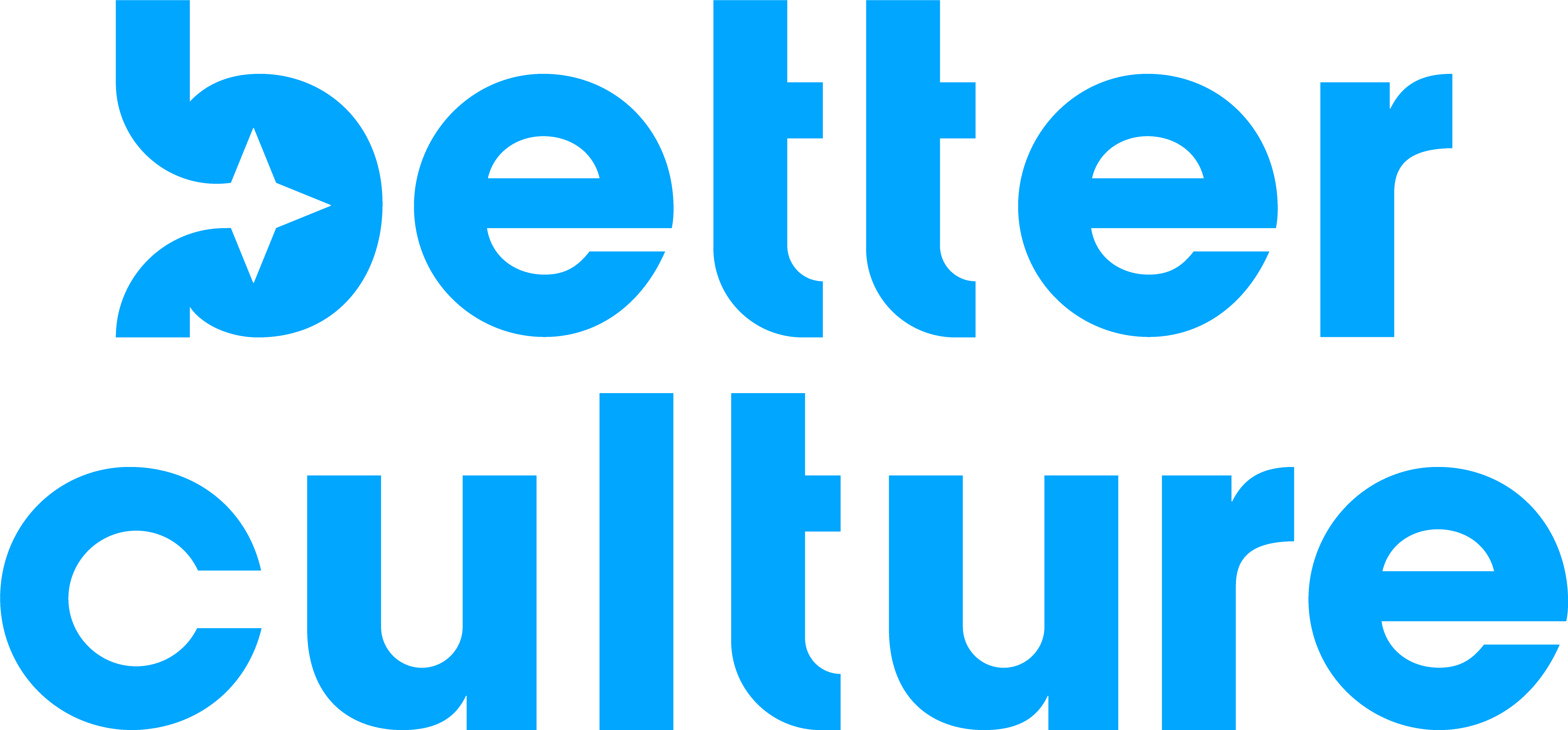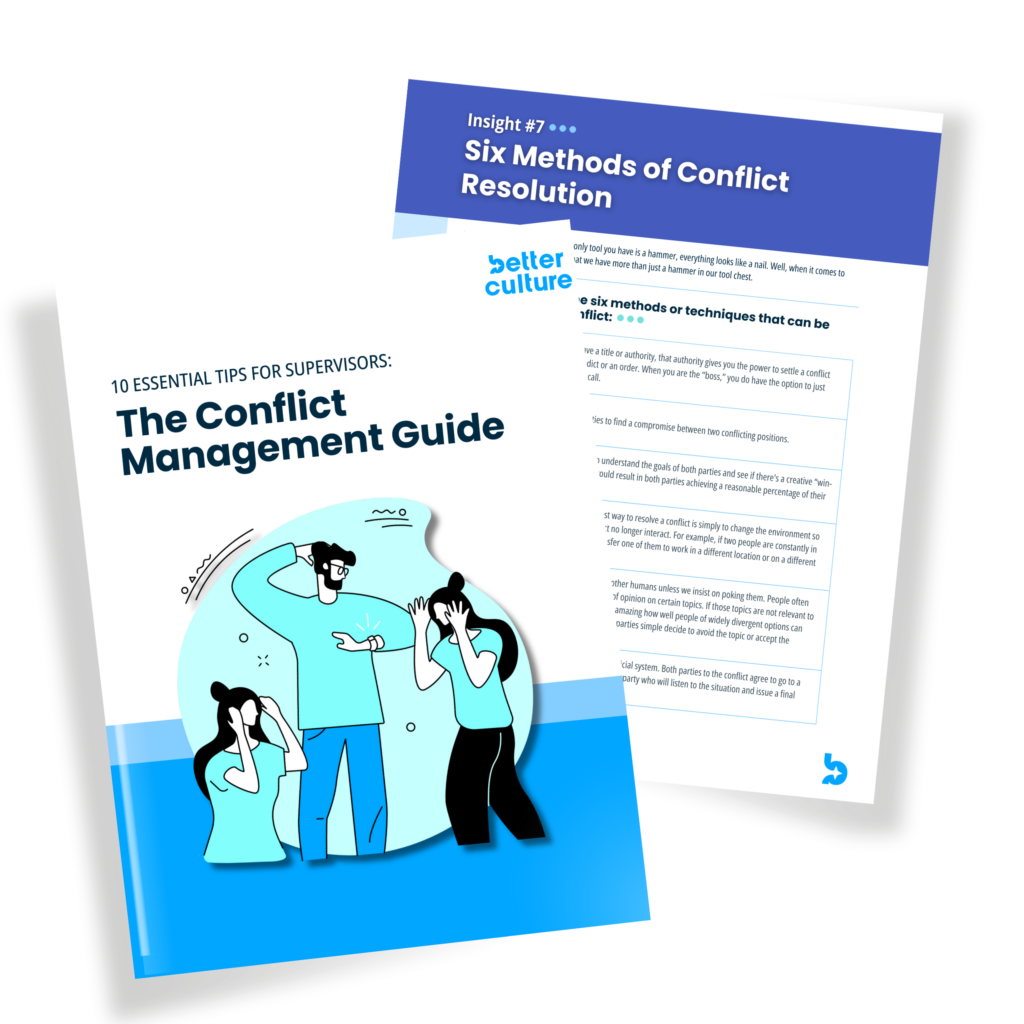Ideas with the potential to change an established way of thinking are few and far between. But when they come, they arrive with a bang!
In our decade plus of work at BetterCulture helping clients develop leaders and build stronger workplace cultures, we’ve delivered hundreds of speeches, trained thousands of leaders, published hundreds of articles, consulted with dozens of organizations – all with the same message. Company culture is envisioned and created from the “top-down.” Culture is a function and responsibility of leadership, and specifically executive leadership.
We weren’t wrong; but we weren’t completely right. Our message was incomplete.
It’s still true that to create and maintain exceptional workplace culture, senior level leadership must embrace and advance a clear vision for that culture.
But increasingly we have come to stress that company culture can (and should) come from the bottom-up too. We’ve proved it. And we can now teach any organization exactly how to do it.
The Traditional View of Culture Shaping
The idea of shaping workplace culture through a top-down and bottom-up approach is not a new one. But historically, the “top-down” part of culture building has been easy for organizations and consultants to wrap their hands (and heads) around. Executives take a 2-day offsite, create or clarify their vision and values, ensure that all align around that vision, set action plans, check-in occasionally to stay on track, monitor progress, etc.
It is the bottom-up part of the culture shaping playbook that has proven much harder to implement – for executive teams and consultants alike. That’s because communicating, discussing, and reinforcing concepts at the front-line employee level is often logistically impractical, if not impossible, for most organizations.
Some of the best management consulting firms in the world will tell you (if you catch them in a candid moment) that even multi-million-dollar, multi-year culture shaping initiatives have a diminishing impact at each level as you push the initiative down through an organization.
It’s simply challenging – both from a time and a communication perspective – to take what starts as a clear vision at the executive level…and to propel that vision down through the organization, layer after layer, without a significant degradation of the essentials of the initial vision. If you’ve ever played the children’s game “telephone” you should have a pretty clear picture of how this information loss happens.
A Modern Approach to Culture Shaping
So, what’s the solution?
Implement a bottom-up process that doesn’t rely on manpower. Let a software-based solution create a cadence, consistency, and communication that doesn’t degrade layer by layer.
Implement a clear, robust, impactful culture shaping process that originates from the bottom-up with every individual employee.
Share teachings that foster specific behaviors that will lead to increased personal success for employees, improved team health, and a stronger company culture.
BetterCulture has created this revolutionary bottom-up culture shaping product. We call it 20 Tenets of Culture.
Introducing the 20 Tenets of Culture
As both Robert Cialdini and John Maxwell are fond of saying, leadership is influence. Every employee in every organization has the potential to influence their colleagues and to influence the culture. We just need to harness that potential.
But what does leadership or influence look like at the front-line employee level? We’ve spent two years researching this question, and we have found a set of core behaviors that, when learned and embraced, deliver a major 3-in-1 benefit. These behaviors, that we have termed the 20 Tenets, will:
- Enhance the personal and professional success of individual employees
- Improve team chemistry, trust, and effectiveness, and
- Strengthen company culture from the bottom-up
So, what are these magical behaviors? Join us for a thought experiment and we’ll explain.
Imagine if your team at work could say they consistently displayed the following behaviors:
- Coachable. Graciously accept, appreciate, and even seek out feedback from others.
- Assume Positive Intent. Grant colleagues the benefit of the doubt.
- Upbeat. Be positive, energetic, and hopeful.
- No Gossip. Discourage discussion of interpersonal drama.
- Kind. Be thoughtful and passionate to coworkers.
- Own It & Fix It. Acknowledge when they make mistakes and repair any damage.
- Tolerance. Accept or even embrace diverse views or values.
- Laughing Matter. Spread joy and have fun.
Would you expect those individuals to be successful? Would you see them as contributing to positive team chemistry and a healthy workplace culture?
Well, those behaviors and 12 more are built into our 20 Tenets of Culture product (click here to download a one-pager of all 20 tenets).
We want to close by sharing the lessons taken from our 20 Tenets product that can be applied to any bottom-up culture shaping process.
Bottom-Up Culture Shaping Done Right
The insights from the rest of this article can be applied to any set of company values (with examples of how we’ve implemented this strategy within our 20 Tenets product). If your organization has five core values that you would like employees to understand and embrace, consider how you can apply these ideas to reinforce adoption of those values at all levels of your organization.
Step 1. Get clarity on the culture you want and/or the values you want to promote.
If you have a clear set of values, skip to step 2. If not, see this article.
How we address this in 20 Tenets: We are often asked if BetterCulture’s 20 Tenets conflict or are intended to replace a company’s own values. The clear answer is no. Most organizations find that our 20 Tenets compliment their company values and make fostering conversation about their values easier and more productive.
Step 2. Create a cadence for conversation, storytelling, or celebration around your values.
Putting them on your website or featuring them once a year at an all-company event is a good start, but it’s not nearly enough. If you don’t’ develop a routine of consistently focusing on core values, time will fly by, and you will find that you’ve not made the progress you hoped for. Ideas to try:
- highlight one value in each team meeting
- host a quarterly celebration to recognize role model employees, and
- regularly mention of values in discussions and internal communications
How we address this in 20 Tenets: Coaching content on 1 of the 20 Tenets is emailed to all participating employees every two weeks (with a few additional features mixed in, the program runs over a full calendar year), and employees and managers are encouraged to find time to discuss each topic and its implications for themselves, their team, and their organization. Employees are all also provided with their own dashboard where they can view their self-ratings and all coaching content at any time.
Step 3. Invite employees to evaluate how well they live up to your core values, and ask them each to commit to improvement in at least one area.
How we address this in 20 Tenets: Every participating employee begins the 20 Tenets process with a self-evaluation on all 20 of the Tenets. After that rating, they are asked to identify two Tenets on which they would like to improve and how much they think they can improve over the course of a year. Each employee is then provided with challenges and reminders to make specific progress on these 2 Focus Tenets on a quarterly basis. Participants are invited to record goals in a confidential digital journal and to reflect on those notes and their progress over the course of the year.
Step 4. Garner support and reinforcement from executives.
Any core-values-based culture shaping efforts will ring hollow if they are not reinforced and role modeled by your executives. The degree to which other managers and employees lean into any culture development process will in large part depend on how involved and vocally supportive your executive team is of those efforts.
How we address this in 20 Tenets: BetterCulture provides executives with a clear playbook with concrete ideas and examples of how they can support and reinforce important concepts all year long.
Step 5. Equip managers with the training and tools they need to have consistent discussion and reinforcement around your core values in their team meetings and daily activities.
Give them ideas on how to start conversations about your core values, how to highlight star performers, how to break down silos by passing along secondhand compliments about culture role models in other departments, and other ideas.
How we address this in 20 Tenets: We provide managers with a clear playbook and concrete ideas and examples (including a full discussion sheet for each of the 20 Tenets) that they can use to facilitate team or one-on-one discussions with their team members.
Step 6. Measure your progress. It’s important to find a way to measure your progress on encouraging people to live your company values.
Smaller organizations will get a “feel” for if you’re making progress, but larger organizations may want to look for ways to objectively measure the degree to which efforts to shape culture are yielding results. One way to make that assessment is by using an employee engagement survey (check out our BetterCulture Survey if you’re looking for resources).
How we address this in 20 Tenets: As employees consume coaching content over the course of the yearlong program, they are asked to rate how they feel their colleagues perform on each of the 20 Tenets. As this progresses, and over multiple years, employers receive a clear picture of their progress.
Wow, that was a lengthy run-down of what to consider when you are shaping company culture from the bottom-up. If you have questions, feel free to reach out, and if you’d like to learn more about our 20 Tenets of Culture product or to set up a demo, please fill out the form on the bottom of this page.



